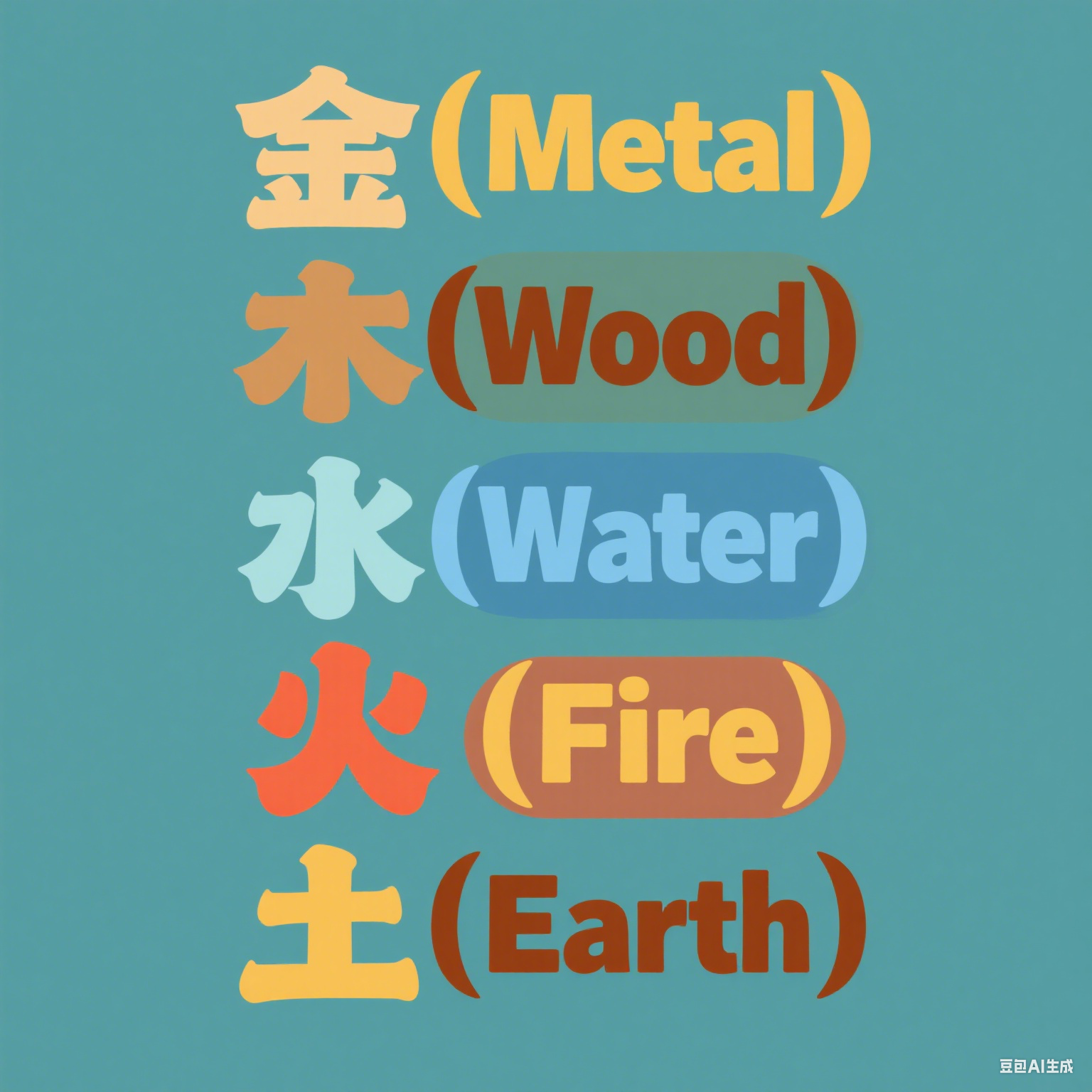In the rich tapestry of traditional Chinese culture, the theory of the Five Elements (Wuxing, 五行) stands as a foundational philosophy that has shaped beliefs and practices for millennia. Rooted in ancient cosmology, this theory explains the interdependence and balance of natural phenomena through five fundamental elements: metal, wood, water, fire, and earth. Let’s explore its origins, principles, and enduring relevance.
The Origin and Core Concept
The term "Five Elements" first appeared in the Shangshu (Book of History), a classic text dating back over 3,000 years. It defines the elements as the building blocks of the universe, each embodying unique energies and dynamics. The ancients believed that all matter—from celestial bodies to human emotions—arises from these elements, which interact through cycles of mutual generation (相生) and mutual restraint (相克) to maintain cosmic harmony.
Characteristics of the Five Elements
1. Metal (金)
Attributes: Hardness, precision, transformation, and inward contraction.
Associations: Symbolizes autumn, the color white, and the process of refinement (e.g., metal ore is smelted into tools).
2. Wood (木)
Attributes: Growth, flexibility, and upward momentum.
Associations: Represents spring, the color green, and the vitality of plants breaking through the earth.
3. Water (水)
Attributes: Fluidity, adaptability, and downward movement.
Associations: Linked to winter, the color black, and the nurturing power of hydration.
4. Fire (火)
Attributes: Heat, illumination, and upward expansion.
Associations: Symbolizes summer, the color red, and the transformative energy of combustion.
5. Earth (土)
Attributes: Stability, nourishment, and central balance.
Associations: Represents the transitional seasons, the color yellow, and the earth’s role in fostering life.
The Cycles of Mutual Generation & Restraint
Mutual Generation (相生)
Elements support and create one another in a cyclic order:
Wood generates Fire: Wood fuels combustion.
Fire generates Earth: Ash (earth) forms from burning.
Earth generates Metal: Metals are mined from the earth.
Metal generates Water: Condensation forms on metal surfaces (e.g., dew on bronze).
Water generates Wood: Moisture nourishes plant growth.
Mutual Restraint (相克)
Elements regulate each other to prevent excess:
Wood restrains Earth: Roots break up compact soil.
Earth restrains Water: Soil absorbs and controls floods.
Water restrains Fire: Liquid extinguishes flames.
Fire restrains Metal: High heat melts solid metal.
Metal restrains Wood: Tools like axes cut wood.
Correspondences in Nature and the Human Body
The Five Elements theory extends to describe relationships across domains:
Nature
Seasons: Spring (Wood), Summer (Fire), Late Summer (Earth), Autumn (Metal), Winter (Water).
Directions: East (Wood), South (Fire), Center (Earth), West (Metal), North (Water).
Climates: Wind (Wood), Heat (Fire), Dampness (Earth), Dryness (Metal), Cold (Water).
Human Body & Emotions
Organs: Liver (Wood), Heart (Fire), Spleen (Earth), Lungs (Metal), Kidneys (Water).
Emotions: Anger (Wood), Joy (Fire), Pensiveness (Earth), Grief (Metal), Fear (Water).
Senses: Eyes (Wood), Tongue (Fire), Mouth (Earth), Nose (Metal), Ears (Water).
Applications in Modern Contexts
Feng Shui
Practitioners use the Five Elements to harmonize spaces:
Metal: Incorporate white decor or metallic accents in the west for clarity.
Wood: Place plants (east) to boost growth and vitality.
Water: Use fountains (north) to enhance flow and creativity.
Fire: Add red elements (south) for passion and energy.
Earth: Use earth tones (center) for stability and grounding.
Traditional Chinese Medicine (TCM)
TCM diagnoses imbalances by element:
A "Wood deficiency" (e.g., liver qi stagnation) might cause irritability, treated with herbs that nourish liver health.
"Fire excess" (heart heat) could lead to insomnia, addressed with cooling therapies.
Personal Development
Understanding your dominant element (via birth chart analysis) can offer insights into strengths and challenges:
Metal types: Disciplined but may struggle with letting go.
Water types: Intuitive but risk overthinking.
Why the Five Elements Matter Today
More than a ancient philosophy, the Five Elements theory offers a holistic framework to:
Balance environments: Create harmonious living/workspaces with feng shui.
Understand health: Link physical/emotional wellness to elemental balance.
Connect with nature: Recognize cycles of growth, harvest, and rest in daily life.
By embracing this timeless wisdom, we gain tools to navigate modern chaos with the balance and insight of ancient traditions.
